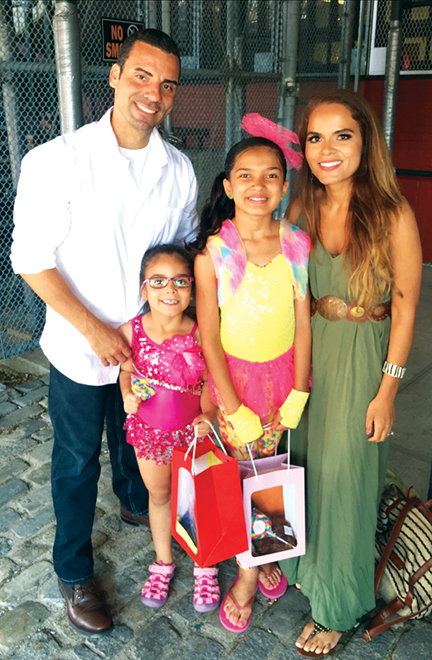Hail, Cesar: Sala a N.Y. 1-wall Legend
The following feature appears in the August 2017 Handball Magazine.
USHA Members can access the full e-Magazine issue by logging on and visiting the “Member Section.”
Not a USHA Member? JOIN HERE.
By Marc Penick
|
|
New York handball players need no introduction to Cesar Sala. He has made his name for many years as a one-wall champion, with titles in big-ball and small-ball singles and doubles.
Sala has a talent for all forms of handball, three- and four-wall included. One-wall, however, is the handball culture in New York, and Sala shares his story of developing his game in the parks and streets of NYC.
Sala’s parents, Cesar and Ana, were born and raised in Puerto Rico. After Cesar Sr. left Puerto Rico for New York, he and Ana wrote letters back and forth, and he eventually proposed through a letter. Ana packed her things and ventured to New York to marry him. They were blessed with three daughters and a son, Cesar, the youngest in the family.
Today Sala is 39, and he and his wife, Kathy, are raising daughters Kaycee, 10, and Emma, 7. They live in the Bronx, where Sala is a New York City police officer.
|
Sala, daughters Emma and Kaycee and wife Kathy. |
How did you meet your wife?
We met at a lounge called Redemption, and it was magic from the first moment I saw her. She drew me in with her beauty and enchanted me with her demeanor. Three years later we were married. Our beautiful girls are both passionate about dancing, makeup and fashion, like their mother.
How and where did you start playing?
I’m originally from Brooklyn, where I went to Lincoln High School and Kings-borough Community College. I started playing in the early 1990s. My home courts were at Coney Island.
The same courts where the pros play that we read about in the magazine?
Yes. I have watched some of the one-wall greats, such as Albert Apuzzi, Al Torres and the infamous Joe Durso. Coney Island was filled with great players. I was drawn to the game as a teenager. The atmosphere of being by the beach and playing in the sun was great. The game is also cheap to play, but the best part is that anyone could just show up and call next to get a game.
Tell us a little about the New York handball environment.
Most places around the country, people would have to call each other to organize games. At Coney Island and most NYC courts, people just show up and find games anywhere! There are thousands of one-wall courts all over the city with people playing. Coney Island and West 4th Street were where a lot of the heavy hitters played.
Which ball is preferred today at Coney Island?
Coney Island players compete in big ball, currently the dominant one-wall game, and small ball, the more traditional form. I gravitated toward the small ball because I enjoyed that world and got involved in three- and four-wall. I remember seeing this big powerhouse lefty four-wall player with a big loopy swing come in and shock the one-wall world by making it to the national final! Little did I know he was trying to be the first in a very long time to win all three nationals in the same year. As far as I know, John Bike is the last man to be in all three finals in the same year. He made a big impression on New York handball at that time.
You’re a one-waller. Describe the difference between playing one-wall vs. three- and four-wall at the open level.
As crossover play binds the handball world, this sport will continue to climb into the realm of being a mainstream sport. Pro players from each version of our game are creating a larger spectrum of community by exchanging ideas, experiences and skill sets that pertain to their version of the sport. For me, four-wall has been the most mentally challenging with all the extra angles and options. I love playing four-wall, but it can be a bit frustrating. My limited back wall, combined with aggressiveness I learned from one-wall, have led to some frustrating moments against the top four-wall players. In 2008 Danny Bell and I played David Chapman and Emmett Peixoto in the final of the Long Island Open four-wall event. David and Emmett were able to expose my weaknesses and beat us handily.
Well, David and Emmett have done that to many very well-trained four-wall players …
Yes, I guess they probably have. They are great players.


